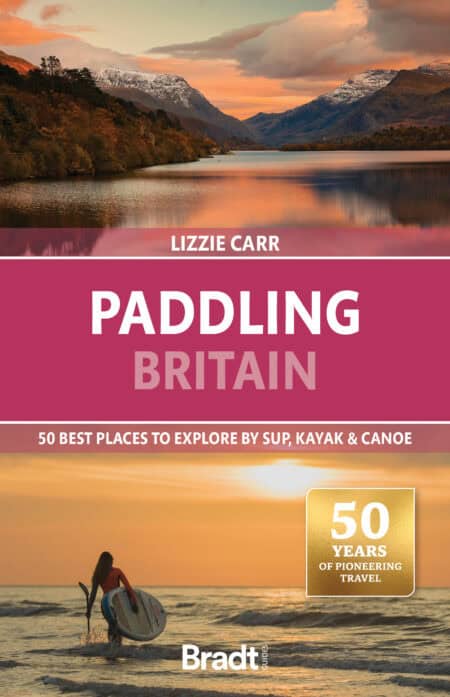Durham (Slow Travel)
City, Dales & Coast
by Gemma Hall£15.99
Slow Durham travel guide. Holiday advice and tourist information cover heritage attractions, industrial history, museums, walking, wildlife, national nature reserves, accommodation, restaurants. Thorough coverage includes Durham city, Heritage Coast Path, hills, Weardale, Upper Teesdale, Barnard Castle, High Force waterfall, old railway trails.
1905 in stock
ISBN: 9781784779498
Published: 10th Feb 2023
Edition: 1
Number of pages: 320
About this book
Travel writer Gemma Hall explored Durham extensively by bicycle and on foot to produce this brand new title in Bradt’s award-winning series of Slow travel guides to UK regions. Walkers, cyclists, wildlife lovers, families, foodies, culture vultures and railway enthusiasts are all catered for, with coverage of a wide range of attractions. As the only comprehensive guidebook to the county, it also contains all the practical information you could need to plan and enjoy time in this delightful, diverse yet under-explored English county. Unexpected treats throng here, from Tanfield Railway (the world’s oldest line) to fellside Methodist chapels accessed by remote footpaths crossing silvery burns, and the Bowes Museum, where an automated silver swan comes to life at 2pm every day to ‘catch’ a fish. And even well-known sites offer surprises: famed for its cathedral, medieval streets, world-renowned university and 500 listed buildings, the UNESCO World Heritage Site of Durham city is also the birthplace of English mustard.
Durham city may be fêted by up to 4.37 million tourists a year (2019 figures), yet few visitors venture into the county’s wider countryside, with its unsung wooded valleys, old mining villages, Heritage Coast Path, and the rugged hills and valleys of Weardale and Upper Teesdale, where national nature reserves harbour thriving meadows filled with relict plants from the last Ice Age. Key heritage attractions such as Castle Barnard’s medieval fort and High Force waterfall (one of England’s greatest) are described in intimate detail – but so too are many places that have never made it into a guide on Durham: lesser-known museums, historical buildings and birdwatching sites. Here too are more remote treats that need tracking down by cycling old railway trails, or on foot, following old packhorse trails to reach abandoned collieries, secluded bathing pools and the display grounds of the black grouse, a rare gamebird.
Whether you are keen to visit Roman forts or understand England’s industrial heritage, to wander the heathery uplands of Moor House or stride boldly along miles upon miles of coastline, discover Durham with Bradt’s unique Slow guide.
About the Author
Gemma grew up in the North East and widely explored Durham’s coast, city and countryside while researching Bradt’s first guide to the region over a decade ago. She has written extensively on the North East for national publications, and is the author of the Bradt travel guide, Slow Northumberland. She enjoys backpacking, wild camping, Britain’s railway heritage, vintage shops and salvage yards, North East folk music, bird-watching, long-distance hiking and cycle rides, churches, and photography.
She has hiked the Durham Coast Path, the Pennine Way in Northern England and cycled many of Durham’s railway trails and off-road routes. Her interest in wildlife has taken her to many remote corners of Teesdale and the Allen Valleys in search of upland flowering plants and wading birds. Gemma is a fellow of the Royal Geographical Society.
Additional Information
Table of ContentsIntroduction
Chapter 1 Going Slow in Durham
Chapter 2 Durham City
Chapter 3 Vale of Durham
Chapter 4 Durham Heritage Coast
Chapter 5 Derwentside
Chapter 6 Weardale
Chapter 7 Teesdale
Appendices
Accommodation
Index




